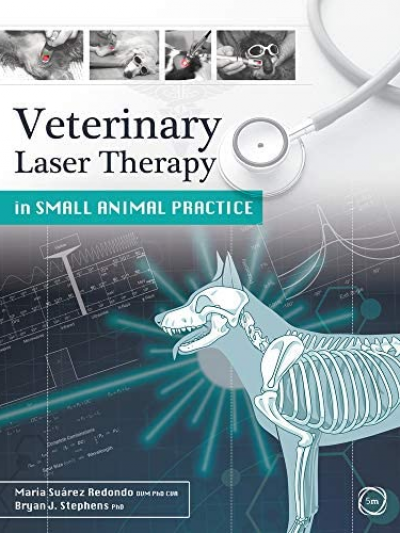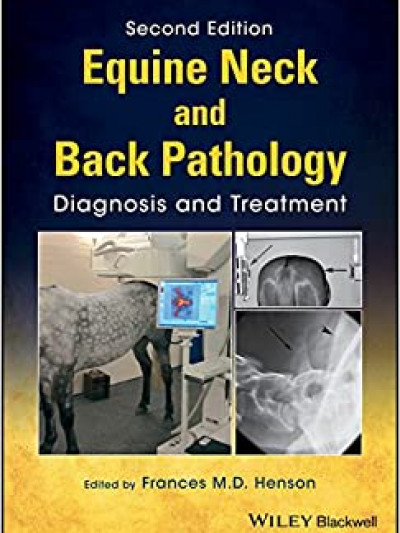Libro: Veterinary Laser Therapy In Small Animal Practice
It includes: how lasers work on tissue, how to use them in different scenarios, how to maximise results, how to use them on different conditions including soft tissue, musculoskeletal and neurological, how to integrate lasers with other therapies, when not to use lasers or use with caution, how to choose the equipment and implement it in the practice environment and promote the treatment to clients. The book also includes case studies to illustrate the use of lasers in practice on a range of conditions in different animals including dogs, cats and exotics.
Veterinary Laser Therapy in Small Animal Practice combines the clinical and scientific approaches reflected in the work of the two authors, showing how both sides together can help you have a positive impact on the patient.
- Half Title
- Title
- Copyright
- Contents
- Preface
- Acknowledgments
- Abbreviations
- Some of what you will see
- Introduction: light as a healing tool
- Part 1 Light’s actions in the body
- Chapter 1 Light is just the catalyst
- 1.1 Electromagnetic radiation
- 1.2 Absorbing light
- 1.3 Light’s bio-targets
- 1.4 Absorption leads to …
- 1.4.1 Heat
- 1.4.2 Changing shape
- 1.4.3 Physical chemistry
- 1.4.4 Shapeshifting examples
- 1.5 Light’s targets within the cell
- 1.5.1 Cytochrome C
- 1.5.2 Nitric oxide: a not-so-secondary effect
- Summary from a different perspective
- Chapter 2 Blood and light
- 2.1 Circulation basics
- 2.2 Heat … again
- 2.3 Push vs. pull
- 2.4 Vasodilation: nitric oxide rearing its head again
- 2.5 Oxygenation
- Summary from a different perspective
- Chapter 3 Anti-inflammatory effect
- 3.1 Changing the flavor of the inflammatory soup
- 3.1.1 Vasoactive amines
- 3.1.2 Acute phase proteins and plasmatic proteases
- 3.1.3 Lipid mediators
- 3.1.4 Cytokines
- 3.1.5 Molecule of the year and more
- 3.2 The anti-inflammatory effect of laser therapy on different cells, tissues, and conditions
- Summary from a different perspective
- Chapter 4 Analgesic effect
- 4.1 How can laser therapy provide analgesia?
- 4.2 Don’t forget pain assessment
- 4.3 Analgesia in different conditions: clinical studies
- Summary from a different perspective
- Chapter 5 Tissue healing
- 5.1 Wound healing
- 5.2 Healing of tendons and ligaments
- 5.3 Muscle healing
- 5.4 Bone healing
- 5.5 Nerve healing and function
- 5.6 Treating contaminated and infected tissues
- Summary from a different perspective
- Part 2 Pointing the light into the patient
- Chapter 6 Light’s path to all these places in the body
- 6.1 Attenuation via absorption and scatter
- 6.2 Scatter: the primary interaction
- 6.3 How much and in which direction?
- 6.4 How this adds up to dose
- 6.5 Interpreting dose in vitro vs. in vivo
- 6.6 Power
- 6.6.1 Average vs. peak power
- 6.7 Treatment time and reciprocity
- 6.8 Power density and patient comfort
- Summary from a different perspective
- Chapter 7 Pointing light at soft tissue: clinical applications
- 7.1 General treatment considerations and parameters
- 7.1.1 Dose
- 7.1.2 Power
- 7.1.3 Pulsing frequencies
- 7.1.4 How often?
- 7.2 Wounds and burns
- 7.2.1 Acute wounds
- 7.2.2 Chronic wounds
- 7.2.3 Burns
- 7.2.4 Wound care, dressings, and laser therapy
- 7.2.5 How to improve results
- 7.3 Lick granuloma
- 7.4 Dermatitis
- 7.4.1 Acute and chronic dermatitis
- 7.4.2 Pododermatitis
- 7.5 Ear disease
- 7.5.1 Otitis
- 7.5.2 Aural hematomas
- 7.6 Sacculitis and perianal fistulas
- 7.7 Hygroma (false bursitis)
- 7.8 Gingivitis and stomatitis
- 7.9 Abdominal organs
- 7.9.1 Transabdominal treatments
- 7.9.2 Laser therapy during laparotomy
- 7.10 Airway
- Summary from a different perspective
- 7.11 Case studies
- Chapter 8 Different flavors (frequencies) for different tissues
- 8.1 Evidence that tissue type matters
- 8.2 Understanding the WHY
- 8.3 Best guesses
- 8.4 Little bit of this … little bit of that
- Summary from a different perspective
- Chapter 9 Pointing light at musculoskeletal and neurological conditions: clinical applications
- 9.1 General treatment considerations
- 9.1.1 Dose (J/cm2)
- 9.1.2 Power (W)
- 9.1.3 Frequency (Hz)
- 9.1.4 How often?
- 9.2 Laser therapy for fractures and osteotomies
- 9.2.1 Laser therapy in growing animals
- 9.2.2 Laser therapy and metallic implants
- 9.3 Tendon and ligament injuries
- 9.4 Muscle and laser therapy
- 9.4.1 Trigger points
- 9.5 Arthritis
- 9.6 How to assess clinical progression
- 9.6.1 Musculoskeletal pain assessment
- 9.6.2 Goniometry
- 9.7 How to improve results
- 9.7.1 Asking the right questions
- 9.7.2 Some anatomical considerations: tips for different areas
- 9.8 Laser therapy in neurological patients
- 9.8.1 Intervertebral disk disease
- 9.8.2 Treating peripheral nerves
- 9.8.3 Transcranial laser therapy
- Summary from a different perspective
- 9.9 Case studies
- Part 3 Using light in your practice
- Chapter 10 Considering laser therapy for your practice
- 10.1 Make an educated choice
- 10.2 Laser safety and contraindications
- 10.2.1 Eye exposure
- 10.2.2 Neoplastic growths
- 10.2.3 Pregnant uterus
- 10.2.4 Recent infiltration of joints with steroids/NSAIDs
- 10.2.5 Thyroid
- 10.2.6 Other extra precautions
- 10.2.7 Compliance and regulatory considerations
- 10.3 How to charge for therapy and when
- Chapter 11 Implementation of laser therapy in practice
- 11.1 Early implementation
- 11.2 How to integrate laser therapy with your current treatments
- 11.2.1 Medications
- 11.2.2 Surgery
- 11.2.3 Acupuncture Laser acupuncture
- 11.2.4 Other physical modalities
- 11.2.5 Stem cells and platelet-rich plasma
- The future light to be shed
- Appendices
- Appendix A. Pain assessment scales
- Appendix B. Goniometry
- Appendix C. Compilation of suggested treatment parameters
- Appendix D. Area measurement tool
- References
- Index
Veterinary Laser Therapy In Small Animal Practice
Stephens, Bryan J.
Suárez Redondo, María
Editorial 5m Publishing
$ 490,000 Precio oferta
Disponibilidad: En stock
Agregar al carroENTREGA 20-30 DÍAS HÁBILES DESPUÉS DE LA COMPRA. Laser therapy has become increasingly popular in small animal practice and has many benefits to the patient – including reduced inflammation, faster tissue healing and less pain, and can be used in a wide variety of conditions including wounds, sprains and fractures. Aimed at the first opinion vet, this very practical book covers the most important aspects of laser use in the practice environment. But it does so in a slightly different approach, taking two (often mis-aligned) perspectives – fundamental science and clinical applications – and combining them for a robust, useful guide to the practice of laser therapy.
| ISBN | 9781789180053 | |
|---|---|---|
| Idioma | en | |
| Páginas | 256 | |
| Año de publicación | 2019 | |
| Palabras clave | Libro, Veterinary-Laser-Therapy-In-Small-Animal-Practice-Stephens-Bryan-Suárez-Redondo-María-, | |
| Físico | Tapa Blanda (22x24x1cm) |
Recibimos todas las tarjetas y medios de pago
Ediciones el profesional envia actualmente a todas las ciudades principales del territorio Colombiano.
* Envios gratis por compras superiores a $ 400,000 en todo Colombia.
Envios a paises de latinoamerica cuando el cliente asume los costos de envío.








